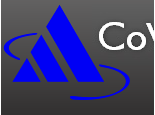© Copyright 1998-
CoVal Systems, Inc., 326 W. Lancaster Ave., Suite 310, Ardmore, PA 19003 USA
Phone: 610.645.6391 / Fax: 610.645.6392 / E-



Design
The Foundation architecture has been designed to meet the current and evolving needs of the critical transportation management environment. The multi-tiered client-server structure is crucial to the support of advanced user functions, automatic services, and integration of a wide-range of modern and legacy devices.
The applications that make up the Foundation software suite are referred to as affiliates and presented in brief below. The affiliates are interconnected via the transport of CoVal Objects. These structured objects allow an additional level of object-oriented design and provide for a self-documenting Database Dictionary and OID documentation.
System Affiliate Manager (SAM)
The SAM performs the roles of scheduling, automatic messaging, forecasting, executing response plans and similar higher level functions. The SAM performs all data processing that requires input data from multiple sources for example roadway data that is computed from both TMC and external sources.
Parkway Device Manager (PDM)
PDM affiliates in a Foundation system maintain the devices assigned to them. Maintaining these devices involves all aspects of communication, monitoring, and data acquisition/processing.
Database Server (DBS)
The DBS affiliate is an affiliate communication hub and data maintenance provider; typically there are at two DBS affiliates operating in a cloud formation. The DBS uses an industry standard SQL server to store CoVal Objects. The DBS is data aware, item updates are monitored for audited fields and critical state changes directly providing high reliability and low latency functions. DBS affiliates also perform synchronization within the DBS cloud and store and forward to the HDBS.
Historical Database Server (HDBS)
The HDBS operates similarly to the DBS but stores all system data in a highly efficient data retrieval database. All system configuration changes, operator activities, field-obtained data and outgoing commands are available via workstation filterable reports by drawing on data stored in the HDBS life-of-the-system daily databases.
External Data Interface (EDI)
The EDI affiliate’s role is the acquisition and distribution of data to multiple high-trust systems either within the TMC or external agencies. The subsystems, while protected by network security, are still interacting with an affiliate with write privileges on the DBS. Examples of these system connections can include third-party travel time firms or device types requiring a vendor's central server for access.
Traffic Information Interface (TII)
The TII affiliate disseminates data determined to be for public use by the TMC. The TII passively accepts real-time device status and roadway data into its database via the SAM. The TII is responsible for processing this data and preparing it for export on a variety of links to external agencies. It creates content for operator viewing, and forms data packages for specific agency requirements. The TII provides a safe repository because it cannot access the DBS and is given only non-sensitive data.
Failover Server (FOS)
A system can have potentially multiple Failover Servers which can operate instances of all Foundation affiliates in hot-start mode. Based on thresholds of keep-alive data published by affiliates, a prioritized mechanism can replace the operation of a failed Foundation server or application automatically.
Foundation Workstations (FWS)
Workstations maintain connections to a DBS with continuous data updates. The Foundation Workstation provides a full system interface to all devices and functions within the system. The Workstation provides both a standard GUI interface and graphical maps interface for reporting purposes. Device data and configuration may be accessed from either interface. Foundation Workstations are additionally capable of configuring database and algorithm properties, displaying real-time data, and reporting alarms and the statuses of the complete system and external agency data.
